8 Nights / 9 Days
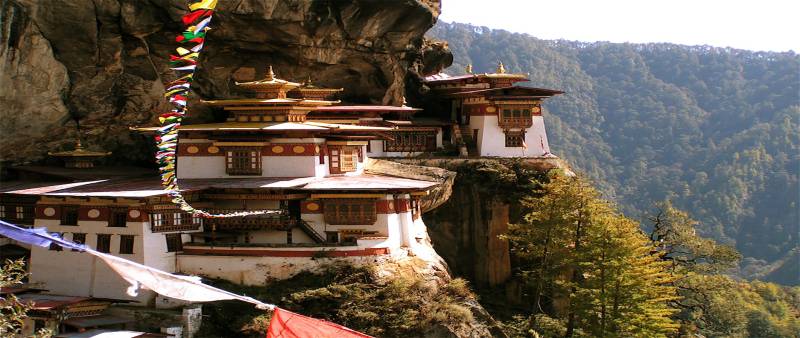
Fly into Paro by DrukAir / Bhutan Airline After completing your immigration formalities, you will be received by our representative from Aeko Tours and Treks will be your tour guide throughout your tour. Then drive to Thimphu, on arrival at Thimphu and after checking in in hotel if there is time we can roam round and enjoy the beautiful capital of Bhutan.
After arriving & visa formalities and collection of baggage, you will be welcomed by our tour representative who will be your tour guide during your entire trip in Bhutan.
Check into your hotel in Thimphu. Free until lunch time for some rest from early morning flight, refreshment and lunch.
Afternoon, you can choose to visit any or all of the following places:-
Tachogang Lhakhang
Tachogang Lhakhang is located in Paro district, on the way to Thimphu. It was founded by Thankthong Gyelpo after he experienced a vision of Guru Rimpochhe, Amitaba and Avalokiteshvara near site. The caretakers today are said to be descendants of Thangtong Gyelpo. Inside the temple one can see the masters relics, including his walking stick.
Tashichho Dzong
The Tashichho Dzong is a Buddhist monastery cum fortress at the northern edge of Thimpu the capital city of Bhutan. The Dzong was built on the western bank of the river Wang Chu, and has historically served at the seat of the DrukDesi or the Dharma Raja of Bhutan’s government. After the kings assumed power in 1907 this post was combined with that of the king and Thimphu severed as the summer caital of the kingdom before becoming the full time capital of Bhutan.
After the breakfast we will drive to following places:
Kuensel Phodrang
The Kuensel Phodrang or the Buddha point isthe world’s largest sitting Buddha statue, the statue is 167 feet high. The statue is situated on top of a hill overlooking the city of Timphu, it can be accessed by road and is about 15 minutes away from the city’s center. The word Kuensel means everything is clear and from this place you will sure enjoy a great view of the Thimphu Valley on both sides. The statute will house a temple inside it, the statue and its adjoining car park and recreational center.
National Memorial Chorten
The National Memorial was built by Bhutan’s third king, H.M. Jigme Dorji Wangchuck who is also known as the “father of modern Bhutan.” He wanted to erect a monument carrying the message of world peace and prosperity. However, he was unable to give shape to his idea in his lifetime due to pressures of state and other regal responsibilities. After his untimely demise in 1972, the Royal Family and Cabinet resolved to fulfill his wishes and erect a memorial that would perpetuate his memory and also serve as a monument to eternal peace, harmony and tranquility.
Motithang Takin Preserve
The Motithang Takin Preserve also known as the Thimphu Zoo by many is a small natural preserve for the Takin Bhutan’s national animal.
It was originally a mini zoo, but it was converted in a preserve later on as the Takin. The mini zoo contained a small number of Takin but the King of Bhutan later decreed that it was improper for a Buddhist nation to keep an animal in captivity. The animals were set free and the zoo was shut down, but for some reason the Takin refused to leave the area for the forests nearby. Instead the animals were frequently found roaming around the streets of the capital city in search for food. As a result the government decided to demarcate an 8 acre fenced location as the Motithang Takin Preserve.
Post early breakfast, you will drive towards Punakha via Dochula Pass. We will stop over for tea at Dochula (3,100 m), where on a sunny day, you can get stunning views of the Himalayan ranges. The Dochu La Pass is probably the best known mountain pass in Bhutan. Located at an altitude of 3150 meter above sea level, the Dochu La Pass is about 30 kilometer away from the capital city Thimphu and the road to Punakha. On a clear day the pass offers visitors a spectacular view of the majestic eastern Himalayan Ranges.
Punakha Dzong
The Punakha Dzong or the Pungtang Dechen Phortang Dzong is located at the confluence of the Mo Chhu and the Po Chhu River, combine to form the Puna Tsang Chu which in turn is a tributary of the mighty Brahmaputra River. The Dzhong was constructed by Zhabdrung Ngawang Namgyal Wangchuck in 1638 on the exact spot as prophesized by the Guru Rinpoche some 800 years ago. According to the prophecy of Guru Rinpoche “a person named Namgyal will arrive at a hill that looks like an elephant”. And lo behold! Zhabdrung Ngawang Namgyal found that the peak of the hill was in the shape of an elephant’s trunk and built the Dzong at that very spot. Another legend associated with the Dzong is that of Zowe Palep, the architect of the Dzong received vision of the Dzong in his sleep. This vision got imprinted in the architects mind and enabled him to construct the Dzong without putting his plans to paper.
(Overnight in a hotel in Punakha)
After an early breakfast, we will be driving down to Trongsa. Admire the view en route the valley of Wangdiphodrang. We will drive to Chimmi Lhakhang to start with. The Chimi Lhakang or the Chimel Lhakang is a Bhuddhist monastery located in the Punakha District of Bhutan. The monastery stands on a small hill close to the village of Lobesa and was constructed in 1499 by Ngawang Choegyel, the 14thDrukpaheirarch.
The Temple is very deeply connected to the legends of Saint Drukpa Kinley also known as the Devine Madman. It has been said that the demon of Dochu-La with a magic thunderbolt of wisdom in imprisoned him in a rock close to the temple. Drukpa Kuenley is called the Divine Madman due to his unorthodox methods of teaching via songs, humor and sometimes bizarre and shocking behavior with deep sexual overtones. You might be shocked to see that the temple houses a number of wooden phalluses that the Lama had brought with him from Tibet. Pilgrims who visit the monastery receive the blessing by being struck on the head with a ten inch wooden Phallus (erect penis). The symbol of an erect penis is said to ward off evil.
Chendebji Chorten
Located 2 kilometers away from the village of Chendebji is the Chendebji Chorten, a large Buddhist Stupa. The Chendebji Chorten is a large white structure built in likeness to the famous Bodhunath Stupa located in Kathmandu in Nepal. The Chorten was constructed by Lama Shinda from Tibet in the 19th century AD. The Stupa is believed to have been constructed at a spot where an evil spirit was subdued by the Lama. Another striking feature of the Temple is the eyes painted at the four cardinal points of the temple.
Trongsa Dzong
The Trongsa Dzong or the Cheokhor Rabdentse is one of the largest and most impressive
Dzong in Bhutan. The Dzong is located on a cliff overlooking the Mangde Chu river gorge. The Dzong was built at the site of a temple that was constructed in 1543, by a Drukpa Lama. This huge multi-level fortress comprises of a series of courtyards and passageways that are built along the topography of the ridge. There are 25 temples located within the confines of the Dzong, most of these temples are dedicated to the deities important in Tantric Buddhism.
(Overnight in a hotel in Trongsa)
After morning breakfast, we will drive towards Bumthang and visit Jakar Dzong.
The Jakar Dzong is situated above the Jakar village in the Chamkhar valley of Bumthang. The Dzhong was originally a site of a monastery that was being constructed at the time of Lama Ngagi Wanchuck’s visit to Bhutan. According to legend during the construction of the Dzong a white bird emerged from the structure and perched itself on the site. In Bhutanese culture a white bird is considered to be auspicious.
Jambay Lhakhang.
Jambay Lhakhang was built by King Srongsen Gampo of Tibet in 659 AD. The temple was blessed by Guru Rimpoche during his visit to Bumthang. It is said that Guru Rimpoche was the one who brought Buddhism to Bhutan. It was renovated by Sindhu Raja after Guru Rimpoche restored his life with his magical powers. Many believe that there is a natural lake under the temple in which Guru Rimpoche took refuge on several occasions.
Kurjey Lhakhang
The Kurjey Lhakhang is a monastery located in the Bumthang Valley of Bhutan. The Kurjey Lakahng Temple Complex is a 30 minute hike from the Jambay Lhakhang temple. According to legend Sendhu Raja, the King of Bumthang was very ill and invited Guru Rinpoche the founder of Buddhism in Bhutan to give him a cure for his ailment.
Upon his investigation the Guru Rinpoche discovered that the illness was caused by the malevolent local deities including the Sheling Karpo. Upon finding out that these deities were responsible; the angry Guru chased them in to a cave.
Namkhe nyingpo goemba:
Namkhe Nyingpo Goemba is located on a hill just east of the town of Jakar, the administrative center of the Bumthang district. The monastery was established in 1970 and is home to about 300 monks who are learing about the Nyingampa Buddhism.
(Overnight in a hotel in Bumthang)
After breakfast you will drive to Gangtey and visit Gangtey Goemba. The Gangtey Monastery or the Gangtey Goempa is an important monastery / temple associate with the Nyingmapa school of Buddhism. The Monastery is Located in the Wandue Phodrang Dzhongkhag in central Bhutan. The Gangtey Monastery is situate in the picturesque Phobjikha Valley, which is also renowned for being the winter home of the rare Tibetan Black Necked Cranes. The monastery was established in 1613 by Peling Gyalse Rinpoche, the grandson of Trenton Pema Lingpa the great treasurer discoverer.
Phobjikha valley
The Phobjikha is a wide glacial valley located in close to the Gangtey Monastery. The Phobjikha valley is the winter home of the rare Black Necked Cranes that migrate from Tibet from the arid plains of Tibet to roost in the more comfortable climate of the Phobjikha Valley. The valley is at an altitude of 2900 meters above sea level and experiences a much lighter winter as compared to the harsh extremes of Tibet. A part of the valley lies in the Black Mountain National Park. There are 2 rivers that flow through this valley called the Nakay Chu and the Gay Chu. According to legend it is said that the rivers represent a serpent and a boar.
Once upon a time there was a race between the two to determine wether people can grow rice in the valley or not, if the serpent won then the people of the valley could grow rice but if the boar won, then rice could never be cultivated in the area.
(Overnight in a hotel in Gangtey)
After early morning breakfast, you will drive to Paro and on the way, we will visit :-
Simtokha Dzong
The Simtokha Dzong is a small Dzong located approximately 5 kilometers south of Thimphu. The Dzong is officially called the Sangak Zabhon Phodrang which roughly translates to the Palace of the Profound Meaning of Secret Mantras. The Simthoka Dzong is said to be the first fortress to have been built by the legendary Shabdrung Ngawang Namgyal in Bhutan. The fortress was constructed in the year 1629. Some suggest the Dzhong is the oldest surviving complete Dzong in Bhutan. The Dzong is currently home to the Institute for Languages and Cultural Studies which is attended by monks and common people alike.
Later drive to Haa, and after lunch we will visit:-
Lakhang Karpo and Nakpo
These two temples/monasteries are probably the most important site in Ha valley. Lhakhang Karpo (white chapel) is the official residence of Ha monastic body (Rabdey). Lhakhang Nagpo (Black chapel) on the slopes nearby is a smaller chapel with a small lake inside the shrine. Both the temples are said to have been built by Pigion emanation of Tibetan King Songsten Gampo in 7th century in a single day.
Overnight in Haa.
After early morning breakfast, we will take you for a morning hike up to Taktsang Monastery, also known as ‘Tiger’s Nest’. Hanging precariously and magically from a rather steep cliff, the Taktshang monastery is a monument of genuine pride for the Bhutanese nation. It defies architectural principles to the core and amazes tourists from around the world. It is a sight to behold.
Tiger’s Nest
Taktshang or the Tigers lair as the monastery is called, it is widely regarded is one of the most important monuments of spiritual significance in Bhutan. Its history is deeply associated with the visit of Guru Padmasambhava, the revered Indian saint who came to Bhutan in the 8th century AD. The cave was named Taktshang after Guru Rinpoche flew into the cave from Kurtoe Singye Dzong in eastern Bhutan while riding on a tigress. When he landed in the cave, he took the wrathful form of Guru DorjiDrolo who is regarded as one of the eight manifestations of Guru Rinpoche to decimate the demons.
Kyichu Lhakhang
The Jowo Temple of Kyichu is one of the oldest temples in Bhutan. The temple was built by the Tibetan King Songsten Gampo in the 7th Century AD. The Kyichu Lhakhang was one of the 108 temples constructed by him to subdue a demon that was terrorizing the people of the Himalayas.
The Lhakahng underwent many extensions during the ages with the last one being carried out in 1965 by the Queen Mother Ashi Kezang Choden Wangchuck. She added another new structure to the temple called the Guru Lhakahng. As one of the oldest Lhakahangs, it houses many important relics. One of the most important relics of the temple is a 7th century statue of Jowo Sakyamuni which is believed to have cast atthe same time as it famous counterpart in Lhasa Tibet.
Rimpung Dzhong
The Paro Dzhong is probably Bhutan’s best known and most iconic Dzhong. This is probably the first building you will notice when you land at Paro International Airportand will probably be your first memory of Bhutan.
The imposing Dzhong is perhaps the finest example of Dzhong architecture existing the world today, the massive buttered walls of the fortress dominate over the valley. The Rinpung Dzhong’s names translates to the ” Fortress on a heap of Jewels “.
The approach toward the Dzong is through a traditional covered bridge called the NemiZam. A paved stone path runs alongside the imposing outer walls of the structure. The valley’s annual springtime religious festival called the Paro Tsechu is organized each year in the courtyard of the dzong and is attended by tourists from all over the world.
(Overnight in a hotel in Paro)
In evening we will visit local market of Paro and overnight in a hotel in Paro.
In the morning after early breakfast we will see you off at the Paro Airport for your onward destinations.
| No of pax | Age Limit | Price per pax (Rs) |
|---|---|---|
| Adult | Above 12 years | $ 550 / Adult ( With Tax ) |
| City | Hotel Name | Star Rating |
|---|---|---|
| Thimphu | khamsum inn | |
| Punakha | White Dragon hotel | |
| Trongsa | Yangkhil Resort | |
| Bumthang | River Lodge | |
| Haa | Hotel Lhayul | |
| paro | Nirvana inn hotel |
Welcome to Aeko Tours and Travels, a Thimphu-based tour company organizing quality tours in Bhutan. Our goal is to show you the wonders of Bhutan (the Buddist Kingdom on the Himalayas), including dzongs, monasteries, and dramatic landscapes ranging from steep mountains to subtropical plains and valleys, fascinating history, and vibrant culture. It is our distinct pleasure to create personalized tours and trekking packages. Our local guides can help you enjoy the tours and treks in Bhutan and strive for your satisfaction.
We specialize in Bhutan tour packages, trekking and sightseeing in Bhutan. We strive to provide extraordinary travel experiences to our guests. The tours and trekking with Aeko Tours and Travels will be interesting as every member of the company is completely dedicated to providing the best services to its guests.
We are dedicated to collaborating with other authorized and reliable suppliers to arrange whatever it is you are looking for. It can include a tour of cultural and heritage sites, a shorter hike, and long trekking in the Himalayas. We hold the expertise in planning and organizing honeymoons, romantic vacations, adventure trips, heritage & cultural tours, family holidays, group holidays, and more in Bhutan. We will arrange everything required during the Bhutan trip, including transportation, hotels, flight ticket arrangements, and more.
Furthermore, our guides are vetted and trained, each passing strict tourism criteria set by the government. We will be happy to connect you to some of the beautiful places in Bhutan. Give us a chance to create the trip of a lifetime!
Read More...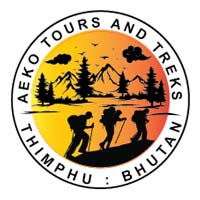
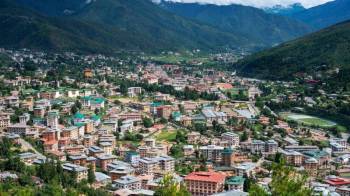 7D/6N
7D/6N
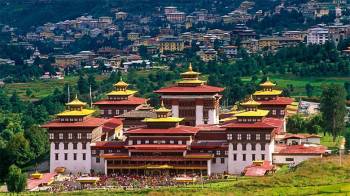 5D/4N
5D/4N
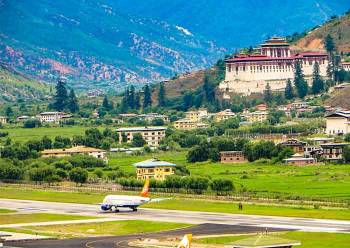 8D/7N
8D/7N
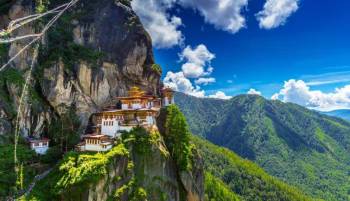 5D/4N
5D/4N
 8D/7N
8D/7N
7 Night - 8 Days Enriching Bhutan Tour
Thimphu - Paro - Punakha - Trongsa - Bumthang
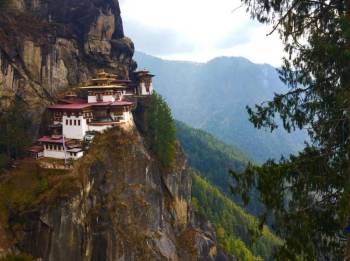 6D/5N
6D/5N
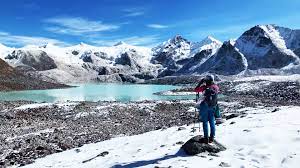 29D/28N
29D/28N
29 Days Snowman Trek In Bhutan Tour
Thimphu - Paro - Punakha - Gasa Dzongkhag
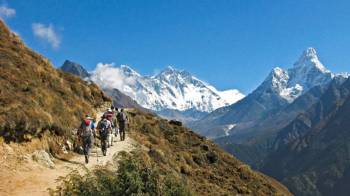 5D/4N
5D/4N
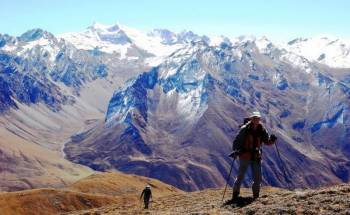 10D/9N
10D/9N
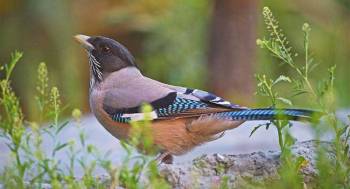 9D/8N
9D/8N
Birding Tour for Corbett and Uttarakhand
Corbett - Pangot - Kumaon - Sundargarh - UP East - Sahibabad
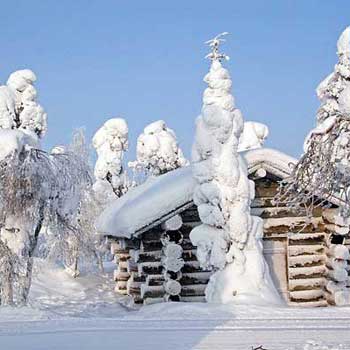 9D/8N
9D/8N
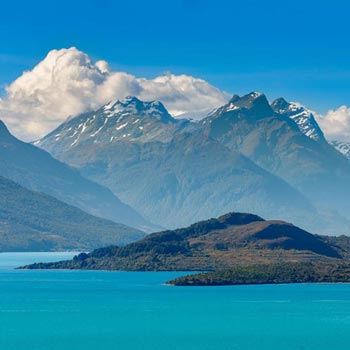 9D/8N
9D/8N
Honeymoon Tour To New Zealand - Colors O..
Auckland - Rotorua - Queenstown - Christchurch
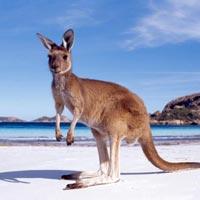 9D/8N
9D/8N
 9D/8N
9D/8N
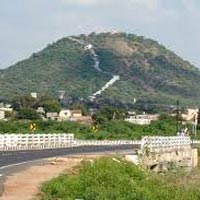 9D/8N
9D/8N
Ahmedabad - Bhuj - Kutch - Dwarka - Somnath - Rajkot - Sasangir
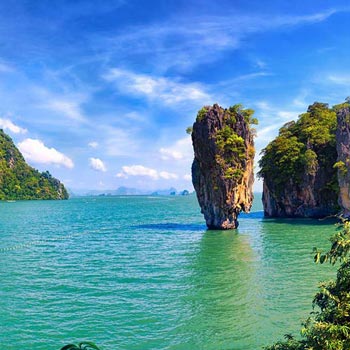 9D/8N
9D/8N
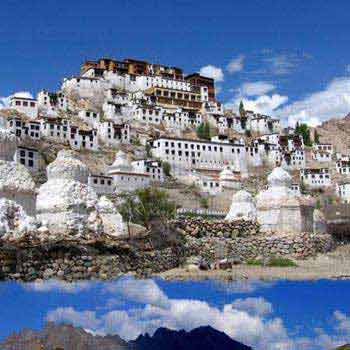 9D/8N
9D/8N
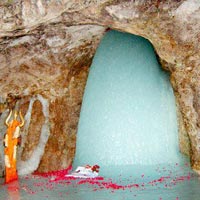 9D/8N
9D/8N
New Delhi - Katra - Anantnag - Srinagar - Ganderbal - Baramulla
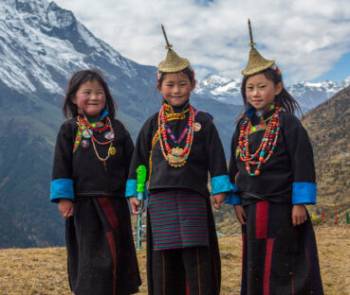 5D/4N
5D/4N
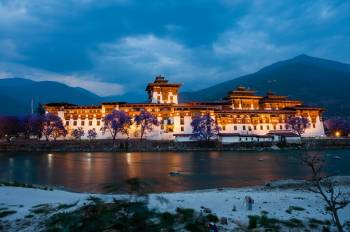 7D/6N
7D/6N
6 Nights/ 7 Days - Bhutan Happiness Tour
Punakha - Bumthang - Paro - Thimphu - Phobjik
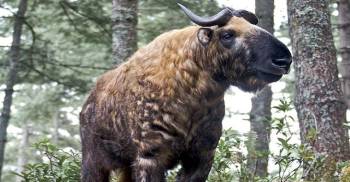 20D/19N
20D/19N
20 Days Land Package Country Tour BHUTAN..
Punakha - Paro - Phuntsholing - Bagdogra - Bumthang - Mongar - Trashigang - Trongsa..
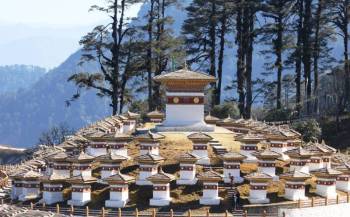 6D/5N
6D/5N
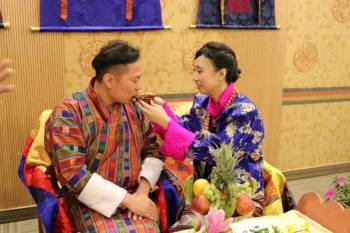 4D/3N
4D/3N
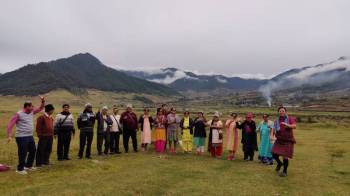 6D/5N
6D/5N
 7D/6N
7D/6N